- عنوان مجله: SDG 11, SUSTAINABLE CITIES AND COMMUNITIES / Moving Forward with the Circular Economy
- نویسنده: Shyama V. Ramani
- حوزه: َاقتصاد دایره ای
- سال انتشار: 2022
- تعداد صفحه: 203
- زبان اصلی: انگلیسی
- نوع فایل: pdf
- حجم فایل: 4.96 مگابایت
با تمرکز اقتصاد ملی و جمعیت در اطراف شهرها، مناطق شهری توجه گسترده ای را به خود جلب می کنند. چالشهای معاصر، مانند تخریب محیطزیست، تغییرات آبوهوایی، بحرانهای اقتصادی و نابرابریهای اجتماعی، فوراً از شهرها میخواهند تا رویکردهای معمول خود را تغییر دهند و خود را به سیستمهای شهری کارآمد، پایدار، فراگیر و انعطافپذیر تبدیل کنند. مسیرهای ممکن برای چنین انتقالی تمرکز یازدهمین هدف توسعه پایدار یا SDG 11 و این کتاب است. نویسندگان این کتاب از رشتههای مختلفی هستند، و این کتاب با بینشهایی از دیدگاههای رشتهای متعددی که علوم اجتماعی، علوم طبیعی و مهندسی را پوشش میدهد، غنی شده است. ارائه کار آنها در قالب مطالعات موردی دقیق به خوانندگان این امکان را می دهد که فرآیندهای انتقال به SDG 11 را با تصاویر ملموس از رانندگان و موانع در طول مسیر درک کنند. در نهایت، از آنجایی که این جلد هم کشورهای توسعه یافته و هم کشورهای در حال توسعه را پوشش میدهد، فرصتی برای درک چالشهای پیش روی دستیابی به SDG 11 تحت سیستمهای مختلف ملی و زمینههای توسعه فراهم میکند. چگونه بسیاری از نویسندگان مختلف از قاره های مختلف جهان برای نوشتن این کتاب گرد هم آمدند؟ خب، این همه ربطی به اشتیاق خانم ماریا تومایی داشت که اکنون دانشجوی دکترا در UNU-MERIT است! در سال 2018، او به تازگی مدرک کارشناسی ارشد خود را در رشته اقتصاد در دانشگاه ماستریخت در مطالعه تطبیقی سیستم های مدیریت زباله جامد در ماستریخت و آتن به پایان رسانده بود. او یک کارآموز پژوهشی در SITE4 Society بود، ابتکاری که پروفسور شیاما رامانی (ویراستار اصلی این کتاب) در ماستریخت برای تقویت هم افزایی بین جامعه علمی و متخصص ایجاد کرده بود. تیم کوچکی از جمله خانم تومایی، دکتر سانائه اوکاموتو و پروفسور رامانی، اولین کنفرانس بینالمللی خود را با عنوان «پایداری شهری و رسیدن به اقتصاد دایرهای» در ژوئن 2018 برگزار کردند. در آنجا، تیم با پروفسور هیروشان هتیاراچی ملاقات کرد. (همکار ویراستار این کتاب)، که از طریق دکتر راجا ونکاتارامانی در هند از UNU-FLORES آلمان بود! در آن زمان، کمتر کسی از ما تصور میکرد که این تیم رو به رشد، سه سال بعد، یک جلد کتاب را با هم هماهنگ کرده و ارسال کند. سپس دوباره به دلیل علاقه خانم تومایی به این موضوع، ما درخواست دادیم و از شبکه جهانی دانشگاهها یا WUN برای ایجاد یک همکاری تحقیقاتی بین چهار دانشگاه: دانشگاه ماستریخت، دانشگاه غنا، کالج دانشگاهی دوبلین و دانشگاه درخواست کردیم. یورک با موضوع مدیریت پسماند جامد شهری. ما تصمیم گرفتیم که برای درک مشکل پیچیده مدیریت زباله جامد در کشورهای در حال توسعه، به جای گوش دادن فقط به یافته های تحقیقاتی در یک اتاق، از طریق مشاهدات مستقیم یاد بگیریم. بنابراین همه ما به راه افتادیم تا با هم در آکرا ملاقات کنیم! بازدید از سایت آکرا ما یادگیری عمیقی را برای ما فراهم کرد. به عنوان مثال، بازدید ما از Agbogbloshie، یک سایت عظیم بازیابی زباله و منابع الکترونیکی، که بسیار خوب سازماندهی شده بود در حالی که عمدتاً یک سکونتگاه غیررسمی بود، تصورات ما را در مورد اینکه اقتصاد دایره ای می تواند چگونه باشد، به چالش کشید. از قابلمه های بزرگ پخت و پز، ساخته شده از قطعات آلومینیومی مختلف (از طریق ریخته گری شن و ماسه) و دستبندهای ظریف از فلزات استخراج شده از وسایل الکترونیکی گرفته تا لپ تاپ ها و تلویزیون های تعمیر شده، این پارک سوال پشت سر هم ایجاد کرد: چگونه سایتی مانند Agbogbloshie می تواند از نظر اقتصادی توسعه یابد و در عین حال همه چیز را به حداقل برساند. تهدیدات جدی برای سلامت انسان و محیط زیست؟ و چگونه می توان آن را در حالی که از فراگیری و برابری حمایت می کرد به دست آورد؟ دکتر کلی ردکر (دانشگاه یورک) به درستی خاطرنشان کرد: “هر جریان زباله در یک زمینه اجتماعی-سیاسی و محیطی بزرگتر وجود دارد و بنابراین هرگونه مداخله باید با دقت در راستای بافت خاص جامعه مورد نظر اعمال شود.” و گزاره های روز! از زاویه ای دیگر، پروفسور نیک هولدن (دانشگاه کالج دوبلین)، که مفهوم مرسوم سلسله مراتب زباله (کاهش، استفاده مجدد، بازیافت، بازیابی، دفع) را مورد مناقشه قرار داد، با این استدلال که در عوض باید پیشگیری از زباله از همان ابتدا روی آن متمرکز شود. در همین راستا، دکتر تام کوران (دانشگاه دانشگاه دوبلین) از طریق Agrocycle، یک پروژه شامل محصولات نوآورانه، تجارت و آموزش در بخش کشاورزی و مواد غذایی، رویکردی جامع به اقتصاد دایره ای ارائه کرد. پروفسور Hettiarachchi (UNU-FLORES) در نظر داشت: «داستان های موفقیت آمیز اغلب پشتوانه خط مشی قبل یا در حین اجرا دارند. اما اگر از تفکر نوآورانه استفاده کنیم، لازم نیست این یک پیش شرط باشد. به طور خلاصه، تا پایان روز تصمیم گرفته بودیم که خودمان هم مبتکر شویم، البته به شکلی بسیار متواضع! این کتاب نتیجه است.
As national economies and populations become concentrated around cities, urban areas are attracting extensive attention. Contemporary challenges, such as environmental degradation, climate change, economic crises and social inequities, are urgently calling for cities to change their business-as-usual approaches and transform themselves into being more efficient, sustainable, inclusive and resilient urban systems. The possible pathways for such a transition are the focus of the 11th Sustainable Development Goal or SDG 11 and this book.
The authors of this book come from a variety of disciplines, and the book is thus enriched by insights from multiple disciplinary perspectives covering social sciences, natural sciences and engineering. Presentation of their work in the form of detailed case studies will permit readers to understand the processes of transition to SDG 11 with concrete illustrations of drivers and obstructers along the way. Finally, as the volume covers both developed and developing countries, it provides an opportunity to understand the challenges to SDG 11 attainment under diverse national systems and development contexts.
How did so many different authors from various continents of the world come together to write this book? Well, this had everything to do with the passion of Ms. Maria Tomai, now a doctoral student at UNU-MERIT! In 2018, she had just finished her master’s degree in economics at Maastricht University on a comparative study of solid waste management systems in Maastricht and Athens. She was a research intern at SITE4Society, an initiative that Prof. Shyama Ramani (lead editor of this book) had created in Maastricht to strengthen synergies between the scientific and the practitioner communities. A small team, including Ms. Tomai, Dr. Sanae Okamoto and Prof. Ramani, organised their first international conference on ‘Urban Sustainability and Catching up to a Circular Economy’ in June 2018. There, the team met Prof. Hiroshan Hettiarachchi (co-editor of this book), who was from UNU-FLORES in Germany via Dr. Raja Venkataramani in India! At the time, little had any of us imagined that this growing team would be coordinating and submitting a book volume together, three years onwards.
Then again, pushed by Ms. Tomai’s passion for the subject, we applied and won a grant from the Worldwide Universities Network or WUN to create a research collaboration between four universities: Maastricht University, University of Ghana, University College Dublin and the University of York on the topic of urban solid waste management. We decided that in order to understand the complex problem of solid waste management in developing countries, rather than only listening to research findings in a room, we would learn through direct observations. So we all set off to meet together in Accra!
Our Accra site visits provided us with deep learning. For instance, our visit to Agbogbloshie, a huge e-waste and resource recovery site, organised extremely well while being largely an informal settlement, challenged our perceptions about what the circular economy could look like. From big cooking pots, made out of different aluminum parts (through sand casting) and dainty bracelets from metals extracted from electronics to repaired laptops and TVs, this park raised question after question: how could a site like Agbogbloshie develop economically while minimising all the grave threats to human health and environment? And how could it be achieved while championing inclusiveness and equality?
Dr. Kelly Redeker (University of York) rightly remarked: ‘Each waste stream exists within a larger socio-political and environmental context and therefore any intervention must be carefully applied in line with the specific context of the community in question’ – triggering the arguments and propositions of the day! From another angle, a wake-up call was sounded by Prof. Nick Holden (University College Dublin), who disputed the conventional concept of waste hierarchy (reduce-reuse-recycle-recover-dispose), arguing instead that waste prevention should be focused upon from the start. In the same spirit, Dr. Tom Curran (University College Dublin) presented a holistic approach to the Circular Economy, through Agrocycle, a project involving innovative products, trading and education in the agri-food sector. Prof. Hettiarachchi (UNU-FLORES) mused: ‘Success stories often have policy backing prior to or during the implementation. But it does not have to be a pre-condition, if we use innovative thinking’. To cut a long story short, by the end of the day, we had decided that we would also become innovators ourselves, albeit in a very modest way! This book is the result.
این کتاب را میتوانید از لینک زیر بصورت رایگان دانلود کنید:



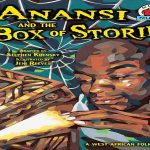







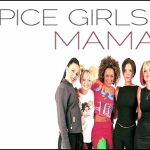
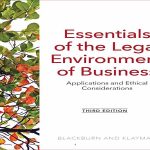
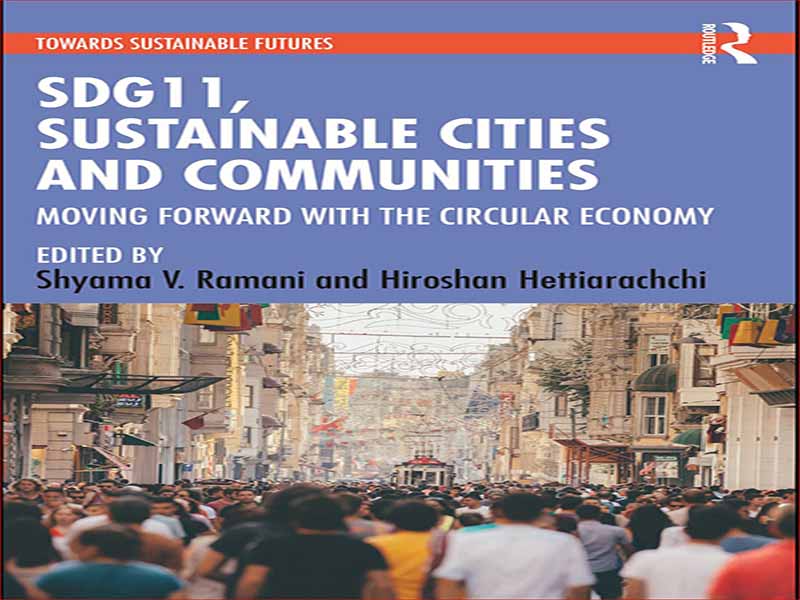












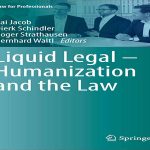








نظرات کاربران